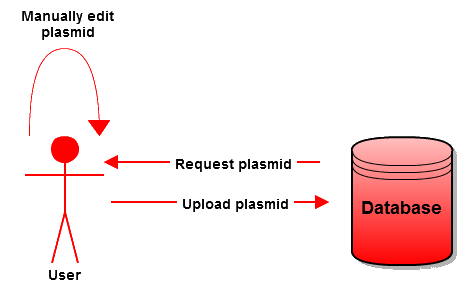Team:Amsterdam/software/logbook designer/future perspective
From 2012.igem.org
(Difference between revisions)
(Created page with "{{Team:Amsterdam/stylesheet}} {{Team:Amsterdam/scripts}} {{Team:Amsterdam/Header}} {{Team:Amsterdam/Sidebar1}} <div id="content-area"> <div id="sub-menu" class="content-block"> ...") |
|||
| Line 6: | Line 6: | ||
<div id="content-area"> | <div id="content-area"> | ||
<div id="sub-menu" class="content-block"> | <div id="sub-menu" class="content-block"> | ||
| - | <h1> | + | <h1>Logbook Designer: Future Perspective</h1> |
| - | The | + | The Logbook Designer is not yet a product that is able to fully push the boundaries of the Cellular Logbook such as, for example, Blast is in its field. This page provides some insight on what is needed to add and adjust to this webtool if the Cellular Logbook is to be a massive platform for new technology. |
<center>__TOC__</center> | <center>__TOC__</center> | ||
| Line 15: | Line 15: | ||
<h2>Optimization</h2> | <h2>Optimization</h2> | ||
| - | The | + | The Logbook Designer presents the user with a construct that does not break any rules when plasmid design is taken into account. However, it does not attempt to create the optimal Cellular Logbook plasmid. A sub-optimal plasmid is more than good enough when creating a proof of concept, which is what we are doing with our iGEM project. But when we think about industrializing the Cellular Logbook, it is necessary that every plasmid is optimized. If the Logbook Designer wants to achieve this, the algorithm does not only have to take into account the optimal distances between features, optimal features and optimal combination of features. The algorithm also has to think ahead when it comes to primer design and cloning steps required to create the plasmid. In order to have a fully functional and industrialized Logbook Designer, the optimization of the algorithm is an absolute necessity. |
</div> | </div> | ||
Revision as of 02:01, 26 September 2012
 "
"






